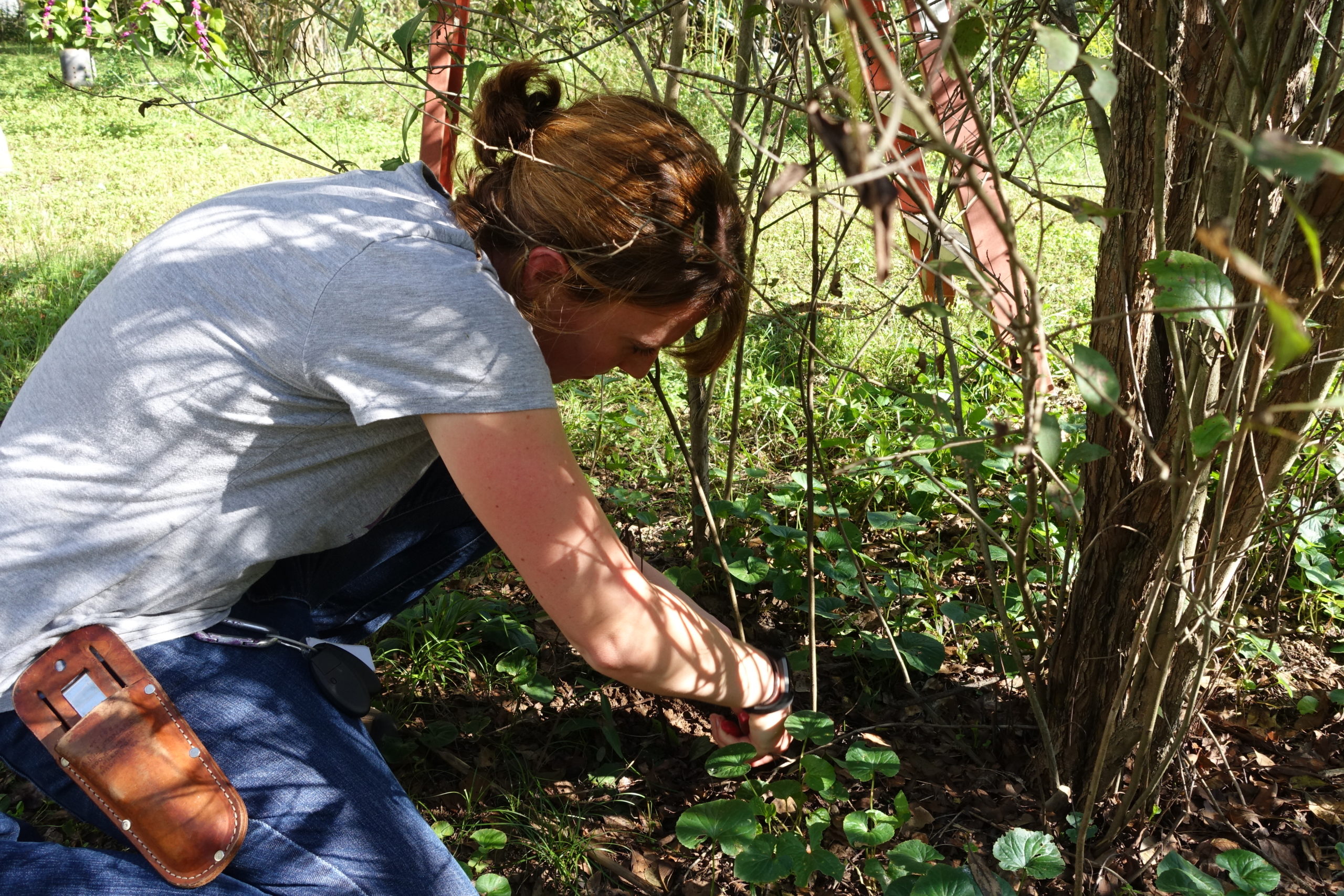We have just returned from the field, having completed the final 2018 expedition for the Campaign for the Living Collections. With still over a dozen taxa native to the western South on the Campaign target list, we followed in the footsteps of the 2017 Arkansas-Missouri Expedition (with Arboretum participants Robert Dowell, former Living Collections Fellow, and Kea Woodruff) and the 2014 Ozarks Exploration (with Michael Dosmann, Keeper of the Living Collections, and staff from the Morris Arboretum, Polly Hill Arboretum, and the Arkansas Natural Heritage Commission), as well as the 1901-1947 Exploration of the United States—a nearly 50-year effort by Founding Director Charles Sprague Sargent and Arboretum botanist Ernest Jesse Palmer to explore and document the flora of Arkansas, Missouri, and Texas.
In collaboration with the Arkansas Natural Heritage Commission (ANHC), Ozark National Forest, and the Oklahoma Department of Wildlife Conservation, our expedition (abbreviated to AOK for Arkansas-Oklahoma) yielded 35 collections. Fourteen of these are considered target taxa and are included on the Campaign list. Several collections from the AOK Expedition, both targets and non-targents, are especially exciting and noteworthy.
Our first stop after arriving in Little Rock, Arkansas on October 1 was to Tom Frothingham’s property in Pleasant Grove, Arkansas. Tom is currently the Landscape and Irrigation Supervisor at the Little Rock Zoo, and is a former ANHC employee. Years ago, he planted a clone harvested from the only known wild population of Stern’s medlar (Crataemespilus canescens). Stern’s medlar is an endangered species and is thought only to grow in Konecny Grove Natural Area (an ANHC property), in the Grand Prairie region of eastern Arkansas. Tom’s clone is now a large multi-stemmed shrub in his backyard, and he generously let us dig up suckers of our own, gave us a small potted plant (a division from his plant), and allowed us to harvest fruit. Together with Tom’s colleagues at the Little Rock Zoo, Connor Livingston and Lauren Goldstein, we eagerly sampled the fruit, which tasted sweet like an apple, before we went on to our next collection site.


On October 2, our first stop was at Byrd Lake Natural Area. This conservation area encloses a lake next to Bayou Bartholomew, the world’s longest bayou. We marveled at the many bald cypresses (Taxodium distichum) surrounding the lake, as well as the mixed pine-hardwood woodland, as we hiked through the property. Near the edge, abutting the Bayou, we found our first hickory (Carya) and oak (Quercus) collections of the expedition! We were able to distinguish water hickory (C. aquatica) from other hickories by its characteristic eleven scythe-shaped leaflets, compressed four-valved nut, and its preference for growing in wet locations. The neighboring water oak (Q. nigra) was also abundant with fruit. Small, dark brown to black acorns were easy to spy nestled among glabrous foliage.



On our final day in the Ozark National Forest, October 7, we visited Shores Lake Recreation Area. This 82-acre lake is at the southeastern edge of the forest and is surrounded by a short leaf pine (Pinus echinata). Persimmon (Diospyros virginiana) trees, with their large and brightly-colored fruit, were one of the first species we noticed near the lake shore. Feeling adventurous, we each tried a fruit. Kea harvested a ripe one and was rewarded with a sweet, juicy burst of flavor. Tiffany, having never eaten a persimmon before, unwisely chose an unripe fruit to sample, and its bitter and astringent taste will not soon be forgotten!


After a week in Arkansas, we spent our final collecting day in Oklahoma targeting seaside alder (Alnus maritima). Seaside alder has just three disjunct populations in the United States and Tishomingo, Oklahoma harbors one of them (the other sites are in Delaware and Georgia). The collection of seaside alder ties in with the Campaign goal of preserving species of conservation status, as this alder is considered endangered (the subpopulations are severely fragmented and are in decline). With assistance from Matt Gamble and Ethan Lovelace of the Oklahoma Department of Wildlife Conservation, we located several fruiting specimens of seaside alder growing along the Blue River! The multi-stemmed shrub holds the solitary female strobili (fruiting structure that resembles a cone) above the branch in the leaf axils, while the pendulous male catkins are in terminal clusters. This collection punctuated an incredible end to our fruitful expedition.
After another successful Arboretum Ozark trip, we are thankful to have been given the opportunity to take part in the Campaign for the Living Collections, research our desired taxa, collaborate with so many helpful, knowledgeable individuals, and visit this scenic area of the country. Of course, we could not resist trying the delicious local fare and taking in the beauty and solace of the Ozarks.
